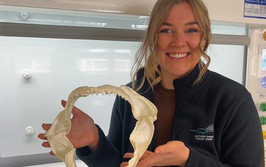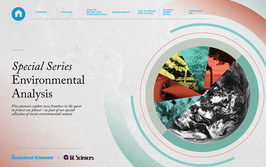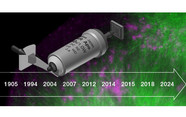David E. Clemmer

Distinguished Professor of Chemistry & Robert and Marjorie Mann Chair, Indiana University, USA
Picking a problem… When I began my laboratory, I had very clear ideas about what I would work on. But, if I’m honest, I didn’t know where they would lead. As my laboratory became more established it attracted a number of very talented students and postdocs. Usually, we began with a discussion of what they might work on and then returned after running experiments with data that took some time for me to understand. Often by the time that they presented the work to me they had a pretty good feeling for it. Essentially, the longer that it took me to understand it, the more likely it was that we worked together on the ideas into the future. Those experiments that went as planned were also important. But, we found ourselves testing the ideas that we didn’t expect and this became what we were working on. Early on I worried about us spending our time in this way. Looking back, I’m not sure why this bothered me. It was that result that we couldn’t quite pin down that required a new type of measurement.
A book for scientists… “What is life” by Erwin Schrodinger. In this short book, Schrodinger presents “the physical aspect of the living cell”. At the time of writing this text, Schrodinger had moved to Dublin and arguably was somewhat isolated. New studies of biological systems indicated a quantized nature of mutations induced upon irradiating organisms with electrons. Schrodinger takes this idea and recognizes that there must be a type of code that describes life (we would call this the genetic code) and based on microscopy images (and other studies) he believed that the code must reside inside of the nucleus of the cell. From simple ideas about size, complexity, and thermodynamics he presents an argument for a polymer containing a code (analogous to a morse code) that is responsible for reproducing living systems (or something along these lines. I have simplified this as my interpretation of the arguments). The text itself is a wonderful read; however, I had not imagined the impact until I read that Watson and Crick sent a draft copy of their famous paper to Schrodinger upon submission for publication. It appears that Erwin’s thought experiment inspired a handful of young biophysicists. This was certainly not the only work of this kind. But, it was remarkable upon thinking about it to go through the thought process and circumstances that brought about the change of field and ideas in this text.


















